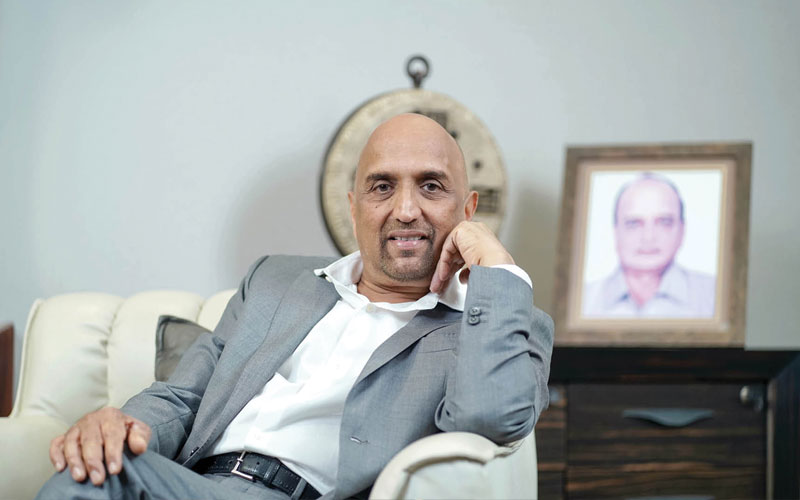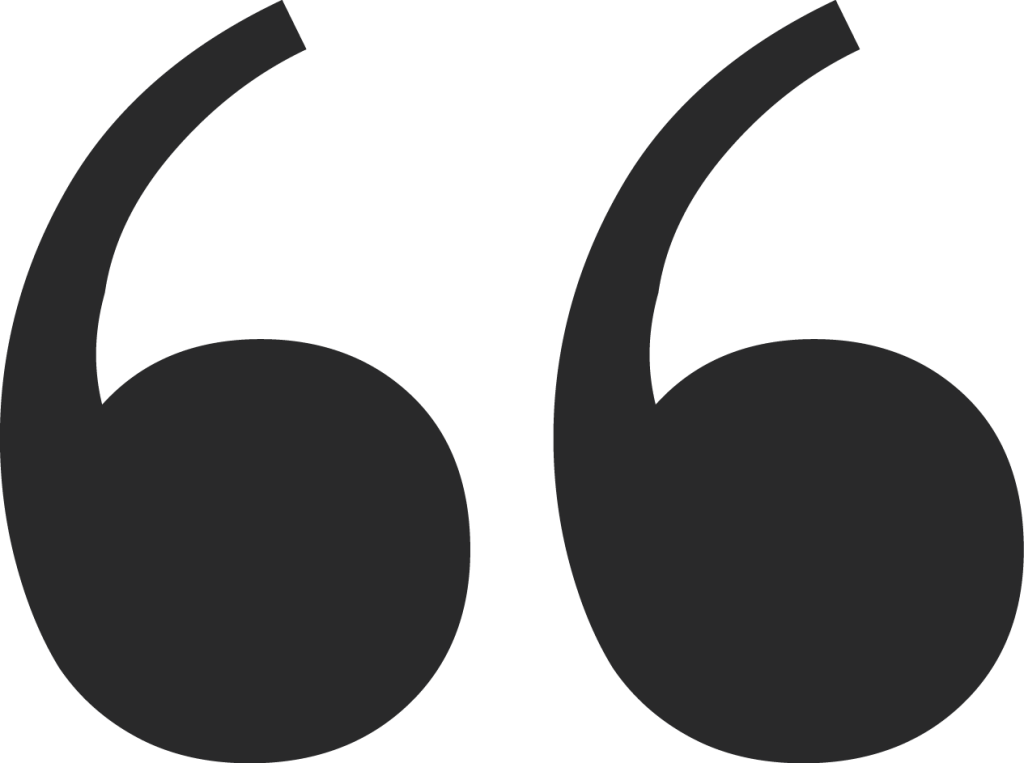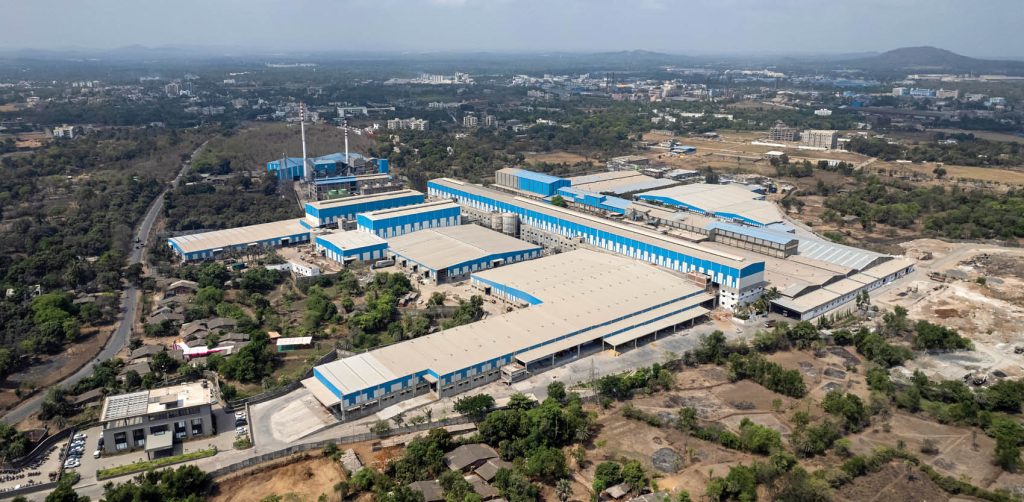With total current capacity standing at 4,40,000 TPA, N R Agarwal Industries is playing a pivotal role in the global packaging value chain with high-quality paperboard solutions. In an exclusive interaction with Paper Mart, Mr. R. N. Agarwal, Chairman & Managing Director of N R Agarwal Industries Limited, shared that the company recently commissioned a 900 TPD state-of-the-art multiwire board machine, supplied by GSPT Korea and Andritz, to enhance its packaging board capacity. Further, the company has finalized another 1,020 TPD advanced board machine to cater to the growing demand in both domestic and international markets. With this expansion, the total production capacity of the company is expected to reach 8,00,000 TPA.

Paper Mart: Could you begin by giving us an overview of your packaging paper and board operations– including your production capacity, facility locations and manufacturing setup?
R N Agarwal: With our facilities located at Vapi and Sarigam in Gujarat, our total production capacity stands at 4,40,000 metric tonnes per annum. Both our sites are equipped with state-of-the-art technology, enabling us to produce high-quality paper and board products that cater to diverse customer needs.

The Indian pulp and paper market was valued at USD 14.75 billion in 2023 and is projected to reach USD 35.57 billion by 2030 (CAGR 13.4%).
PM: Please walk us through your current product portfolio. What grades, GSM ranges and end-use applications do you cater to, and are there any specialty packaging paper and board products you offer?
RNA: Our product portfolio is broad and designed to meet varied end-use applications. Our products include Folding Box Board (FBB), Solid Bleached Sulphate (SBS) boards, writing & printing paper, A4 copier paper, duplex board, and triplex board.
Our GSM ranges include FBB & SBS board having a GSM range of 230–400, duplex board with 230–500 GSM, triplex board with 230–450 GSM, writing & printing paper with 48–120 GSM and copier paper with 70–80 GSM. The products have end-use applications in the food & beverage sector, healthcare sector, and garments sector. It also finds use in notebooks, copier or Xerox paper sector.
In terms of specialty products, we are actively offering sustainable packaging solutions, including recyclable and eco-friendly grades, that support the transition away from plastic packaging.
Watch: In Pursuit of Lesser Water Footprint
PM: Which are your key domestic and international markets? How has your market footprint evolved in the past few years?
RNA: In the domestic market, we have a strong presence across India, catering to all major cities; while in the international market, we export to Asia, Europe, Africa, and the Middle East, with exports expanding significantly after the commissioning of our new board machine in March 2024.
Over the past few years, our footprint has grown meaningfully, driven by the rising demand for sustainable packaging solutions. We have not only broadened our portfolio but also strengthened our distribution network, enabling us to serve a wider customer base globally.

We are working towards global integration, strengthening exports to become a leading global supplier of sustainable packaging boards.
PM: Sustainability is becoming a cornerstone of packaging. What steps have you taken to integrate environmentally responsible practices into your manufacturing and sourcing?
RNA: Environmental stewardship is central to our operations. Some of our key initiatives include lowest water consumption per tonne of packaging board in the industry that is achieved through advanced primary and secondary treatment systems and installation of RO plants that convert treated wastewater into potable water.
We also have a waste-to-energy plant where we convert solid waste into power/ energy for our own operations. We even accept solid waste from other industries to be utilized in our energy facility, further supporting circularity. We have continuously focused on reducing emissions, conserving natural resources, and ensuring compliance with environmental regulations.

PM: How has demand for packaging paper and board evolved post-COVID and amid growing e-commerce and FMCG consumption? Which segments are currently driving the most growth for you?
RNA: Post-COVID, the packaging paper and board industry has witnessed accelerated demand, primarily driven from e-commerce, FMCG, pharmaceuticals, and foodservice sectors.
The Indian pulp and paper market was valued at USD 14.75 billion in 2023 and is projected to reach USD 35.57 billion by 2030 (CAGR 13.4%). Within this, packaging has emerged as the strongest segment, driven by the shift from plastic to paper-based solutions, consumer preference for sustainable packaging, and the rapid growth of organized retail and e-commerce. For us, FMCG, healthcare, and e-commerce packaging remain the strongest growth drivers.
PM: According to recent global market data, the packaging paper and board market is projected to grow steadily through 2033. How are you positioning your business to tap into this rising global demand?
RNA: We are preparing for the growth in the packaging paper and board market with significant capacity expansion and technology upgrades. We recently commissioned a 900 TPD state-of-the-art multiwire board machine, supplied by GSPT Korea and Andritz. The product from this line has been very well received in the market.
Looking ahead, we have finalized another 1,020 TPD board machine, designed with advanced technology to meet rising domestic and export demand. These investments firmly position us to serve the evolving needs of both Indian and international customers.

We are expanding into innovative packaging solutions across FMCG, pharma, and e-commerce sectors.
PM: What are some of the most significant technological upgrades or process improvements you’ve made recently in your mills to enhance quality, reduce waste, or optimize energy usage?
RNA: The new 900 TPD board plant, equipped with fully DCS-controlled automation, ensures consistent product quality, high productivity, lower waste generation and optimized energy and water usage. This modernization is helping us balance efficiency, sustainability, and performance.
PM: Are you seeing a shift in customer preference toward higher-strength or lightweight packaging paper and board variants? How are you balancing performance with cost-efficiency in product development?

RNA: Customer preferences are evolving across industries. To meet this evolving need, we have produced coated duplex boards (WLC) that are eco-friendly, made from recycled fibers, cost-effective, and suitable for cereal boxes, dry foods, and FMCG. We also have Folding Box Board (FBB) which is premium-grade with durability and a superior print surface, ideal for fragile products and premium FMCG. We have manufactured Solid Bleached Sulphate (SBS) boards which are made up of 100% virgin fibre, luxury white finish, excellent for embossing and high-end packaging (e.g., perfumes, chocolates, cosmetics).
We strive to align performance, print quality, and sustainability with customer budgets, helping brands balance premium appeal with cost-efficiency.
PM: What are the major challenges you currently face as a packaging paper and board manufacturer, and how are you navigating them?
RNA: Some of the challenges are raw material volatility which include price fluctuations in pulp, recycled paper, and chemicals. To counter this, we are diversifying sourcing and exploring alternative fibres. Paper production is also an energy-intensive process. To tackle this challenge, we are investing in energy-efficient technologies and renewable energy to manage costs and sustainability. We face logistics and shipping delays that affect both inbound and outbound supply chains. We mitigate risks by building stronger supplier networks and distribution partnerships. Lastly, to ensure regulatory compliance, we adhere to strict environmental and safety regulations through investments in compliance systems and monitoring.
Also Read: Sripathi Paper and Boards Aims to Become World’s First Fully Sustainable Packaging Board Enterprise
PM: Looking ahead, what’s your strategic roadmap – capacity expansion, backward integration, export push, product diversification? How do you envision your mill’s role in the global packaging value chain in the next 5 years?
RNA: Our roadmap is ambitious and future-ready. To expand our production capacity, a new 1,020 TPD board machine project is underway, enabling us to cater to rising demand. We are also working towards global integration, strengthening exports to become a leading global supplier of sustainable packaging boards.
In terms of product diversification, we are expanding into innovative packaging solutions across FMCG, pharma, and e-commerce sectors. For sustainability & efficiency, we continue to focus on water conservation, waste-to-energy, and circular economy practices.
Over the next five years, we envision N R Agarwal Industries playing a pivotal role in the global packaging value chain, supplying high-quality, sustainable, and technologically advanced paperboard solutions.

We strive to align performance, print quality, and sustainability with customer budgets, helping brands balance premium appeal with cost-efficiency.



